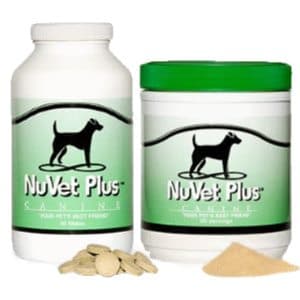- Home
- About the Shih Tzu
- Imperial Shih Tzu
Imperial Shih Tzu: Myth or Reality
Imperial Shih Tzu, Miniature, Munchkin, or Dwarf, Tiny Imperial, Tiny Teacup, Chinese Imperial, and Tiny Toy Shih Tzu are all names that are being used interchangeably to refer to Shih Tzu dogs that are smaller than the AKC breed standard of 9 to 16 pounds.
At first glance, one would think they represent a separate AKC breed. This is not the case; they are Shih Tzu dogs that usually reach adult weights of between four and nine pounds and heights of nine inches or under. These names have been invented and used by breeders and the public and are in no way "official" designations of the breed.
Shih Tzus, including the small or "Imperial" varieties, are known for their affectionate temperament and companionable nature. They are generally playful, cheerful dogs who love being part of the family and get along well with children and other pets.
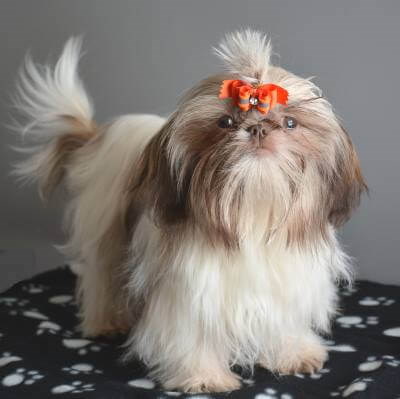
Their small size makes their energy levels easily manageable, making them
suitable for both apartment living and larger homes. However, like all breeds,
they need regular exercise to remain healthy and happy. Despite their small
stature, these dogs are known for their robust health, with a lifespan
typically between 10 and 16 years.
Shih Tzus are also appreciated for their magnificent double coat, which
requires regular grooming to keep them looking their best. As for their dietary
needs, they need balanced nutrition suitable for small-breed dogs. In terms of
costs, they tend to be on the pricier side, given their popularity and the
extra care that smaller dogs often require.
When finding small Shih Tzus, potential owners should look for reputable
breeders who prioritize the dogs' health and well-being. Ethical breeders will
happily share health test results, introduce the parents, and show where the
puppy has been raised. Alternatively, rescue organizations and shelters have
Shih Tzus available for adoption. Always remember that regardless of size,
every dog deserves a caring and responsible owner who is ready to commit to its
lifelong well-being.
Imperial Shih Tzu: Accident or Deliberate?
There is always some variation in size among dogs in the same litter. Some puppies are born smaller than expected, even though their parents are the normal size.
As with any breed, occasionally, there will be a runt or a puppy that is smaller than his littermates and thus smaller than the breed standard once they reach adulthood. This is an accidental occurrence but is common in many breeds.
Breeding Smaller Dogs
Some breeders have fallen in love with the smaller versions of the Shih Tzu and are purposely breeding smaller and smaller dogs.
Breeders who deliberately breed small Shih Tzu will choose two small dogs that are less than the breed standard, hoping to produce offspring that are small as well. Some breeders who purport to breed Imperials go so far as to claim that there is an "imperial gene" responsible for creating small Shih Tzu. There is no evidence for this claim but I'll address that in just a moment.
To breed selectively for small dogs, breeders will find a petite male, breed him to a petite female, and continue to take the smallest dog from the litter until they have a very tiny dog. Some breeders actively trying to breed small dogs are also working to get their dogs listed as an official dog breed, "Imperial" or "Chinese Imperial." Whether you call them teacups, miniatures, Imperial Shih Tzu, or Chinese Imperial, the terms all mean the same thing -- a Shih Tzu who weighs below the standard weight.
The Science Behind the Miniaturization of Dogs
The Shih Tzu is not alone in becoming smaller over time. The process of dogs becoming smaller is both of natural and deliberate breeding. All small dogs can thank a genetic mutation that happened over 50,000 years ago.
"After consulting with scientists in England and Germany, the researchers found that the mutation was present in 54,000-year-old DNA from fossils of Siberian wolves (Canis lupus campestris), as well as in the DNA of every canid species alive today, including jackals, coyotes, and African hunting dogs." Live Science
However, we must thank humans for intervening in the process as early as 7,000 to 9,500 years ago through breeding practices geared toward creating smaller dogs.
The first slightly smaller dog breeds, which were eventually bred into the extremely miniature versions we see today, emerged between 7,000 and 9,500 years ago, according to the researchers. People needed small dogs to help hunt smaller animals, such as rabbits. This process continues today, with selective breeding to create small dogs, even smaller for companions.
Imperial Shih Tzu: The Debate
There is some controversy about the term Imperial. Most people think of Imperial to mean smaller or miniature-size Shih Tzu, which is smaller than the standard at 9 to 16 pounds.
But others have suggested that Imperial refers to a different breed, possessing a special imperial gene.
According to this theory, these smaller dogs are descended from the Gobi Desert Kitchen Midden Dog, implying that the small Shih Tzu has a royal bloodline. The history of the Shih Tzu is shrouded in mystery.
Since we don't have any written records to confirm the early history of the breed, it is believed that the Kitchen Midden Dog played a pivotal role in the development of several breeds, including the Tibetan Spaniel, the Pekingese, the Japanese Chin, the Papillon, the Pug, the Lhasa Apso, and the Shih Tzu.
If this is true, then all Shih Tzus share the same lineage. There is no difference between "regular" and "imperial" Shih Tzus. In recent times, all Shih Tzu dogs have descended from just 14 dogs.
After the Communist Revolution, the breed was all but extinct. Many of the dogs in China were killed because they were associated with wealth. It didn't help that Dowager Empress Tzu Hsi, who had a breeding program of Shih Tzu, Pekingese and Pugs died in 1908.
Luckily, some were exported out of China and to England and Scandinavia, and eventually, just 14 dogs, 13 Shih Tzu, and one Pekingese, became the foundation stock for all Shih Tzu dogs alive today.
This means that all Shih Tzus share the same foundation bloodlines, and we can put to rest the myth of the Imperial gene.
Imperial Shih Tzu Breeders
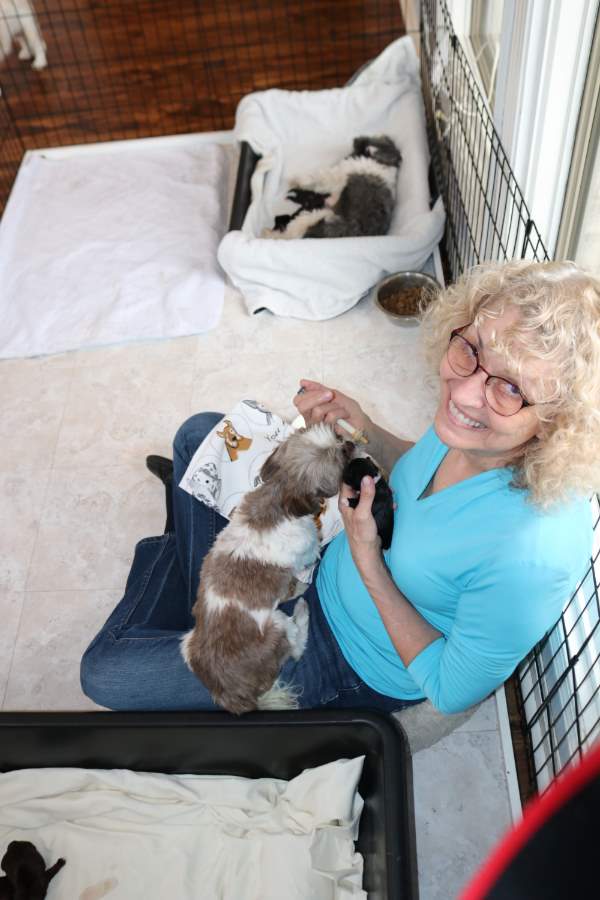
Now that we know that Imperial is just an adjective to describe the size of some Shih Tzu dogs, let's look into the common practices of some breeders.
For people who love the breed and tiny dogs, the allure of a tiny Shih Tzu is strong. The problem arises when breeders deliberately breed small and then claim their dogs are exceptional in some way and thus should be worth more money than those bred to the AKC standard.
So-called Imperial breeders tend to charge more for their puppies because they insist these tiny pups require additional nutritional supplements, care, and affection. Due to their small size, they sometimes need to be hand-fed. It is true that tiny puppies are fragile and may need additional care, but so are standard-size dogs.
All toy breeds deserve this level of care, and all reputable breeders will do what is needed, including bottle feeding and even tube feeding if needed.
Reputable breeders do offer smaller sized dogs. So I don't want to think that any breeder with a small pup is one to avoid. Rather, I just want you to do your due diligence and ask questions.
Law of Supply and Demand of Shih Tzu Imperials
It is unclear whether these breeders of the so-called "imperials" are doing so to make more money or in response to a society looking for smaller and smaller "purse" dogs. Most Imperial Shih Tzu breeders will say that they breed for a smaller size because they like small-sized Shih Tzu dogs. There is some merit in that. Let's face it, a five-pound Shih Tzu may be easier to manage for a frail old woman.
Shih Tzus are very sturdy dogs, and a 16-pound Shih Tzu is quite a handful, even though they are considered a toy breed by AKC standards. Shih Tzu dogs love sitting on people's laps, and a 16-pound lap dog is a formidable weight, especially for a 110-pound woman. Our dogs have gotten smaller over the years through deliberate attempts by breeders to reduce the size of the dog.
Today, we have many breeds with more than one size, including Schnauzers, Poodles, American Eskimo, and Shar Pei, among others. Even among the toy breeds, there have been drastic reductions in size within the last century or two. The Yorkie, once a much larger dog, is now expected to be seven pounds or under.
A quick survey of Shih Tzu breeders reveals that demand often dictates the supply. The law of supply and demand is alive and well in the dog breeding industry, whether breeders or the general public are willing to acknowledge it.
Breeders supply society's demand for small dogs, using the terminology that has become fashionable in recent years. The terms Imperial Shih Tzu, Teacup, and Tiny Toy Shih Tzu are those that the buying public has latched onto.
Consumers want new and different and search for unusual pets, often as status symbols. Is this right? This is just the reality of the world we live in.
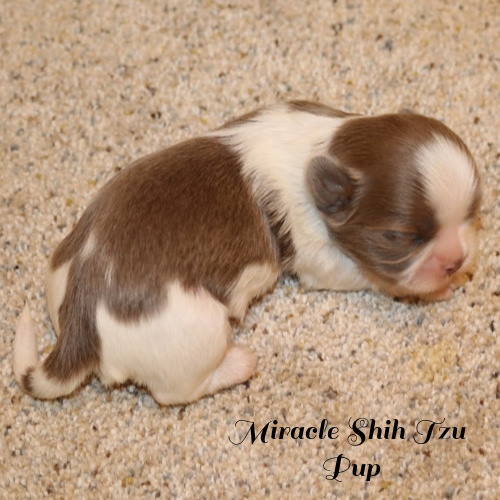
The Downside to Smaller Shih Tzu
Sadly, there is another side to this breeding tendency. Usually, these so-called Shih Tzu Imperial dogs are healthy, but there is no guarantee. If puppies are under five pounds, they may have considerable health problems.
As with other small dog breeds, hypoglycemia can be a problem in tiny breeds. Hypoglycemia or low blood sugar is a possible problem with all toy breed puppies but becomes an even greater risk to tiny Shih Tzu pups. If not caught early, it can be fatal. Other problems associated with the Shih Tzu breed can worsen in the tiny versions of the breed.
One of the saddest problems that seem to occur when we breed for smaller and smaller dogs is skeletal defects that result in discomfort and pain.
This happens in dogs selectively bred to be dwarfs and those whose structure is smaller than the breed standard. Often, this "dwarfism" in Shih Tzu dogs is deliberate and desirable. Breeders often describe long bodies and short legs, coupled with outward-turned feet, as Shih Tzu with a cobby body, a very desirable trait.
These dogs may develop severe problems due to their little bodies. You can see the results of shorter legs and longer bodies in breeds such as Dachshunds and Corgis.
Whether there is a right or wrong to this debate remains to be seen. In the meantime, tiny Shih Tzu puppies can be purchased as well as normal-size dogs of nine pounds or more.
New owners have the right and responsibility to research and make an informed decision about the size of Shih Tzu they prefer. They should not be caught up in the terminology and should do their homework before purchasing a new puppy. As with any living creature, impulse buying should be avoided.
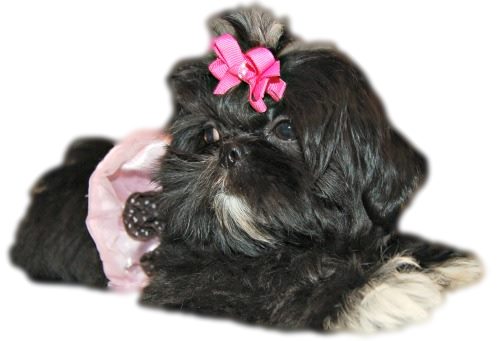 Imperial Shih Tzu
Imperial Shih TzuImperial Shih Tzu Conclusion
In conclusion, the various terms used to refer to smaller Shih Tzu dogs, such as Imperial, Miniature, Munchkin, and Tiny Teacup, do not represent separate AKC breeds but rather variations within the Shih Tzu breed. These names have been coined by breeders and the public, and they are not official designations.
Shih Tzus, including the smaller varieties, are known for their loving and friendly nature, making them great companions for families and individuals alike. Their small size makes them suitable for different living situations, including apartments, and they have manageable energy levels.
However, it is important for potential owners to find reputable breeders who prioritize the health and well-being of their dogs. Ethical breeders will provide health test results, introduce the parents, and show where the puppies have been raised. Adoption from rescue organizations and shelters is also a viable option.
While there is some controversy surrounding the term "Imperial" and debates about the existence of an imperial gene, all Shih Tzus share the same foundation bloodlines. The breed has a rich history, and despite being almost extinct at one point, it has been preserved and flourishes today.
Breeders catering to the demand for smaller dogs should be approached with caution, as breeding for extreme sizes may result in health issues. Responsible ownership and informed decisions are essential when choosing the size of a Shih Tzu. Impulse buying should be avoided, and thorough research should be conducted to ensure the well-being of the dog.
In the end, regardless of size, every dog deserves a caring and responsible owner who is committed to their lifelong well-being. So whether you choose a smaller Shih Tzu or a standard-size one, the most important factor is providing them with love, care, and a fulfilling life as a cherished member of your family.
References and Further Reading
AKC breed standard for Shih Tzus

About Janice
Janice is the voice behind Miracle Shih Tzu. Having lived with dogs and cats most of her life, she served as a veterinary technician for ten years in Maryland and twelve years as a Shih Tzu dog breeder in Ohio.
Her education includes undergraduate degrees in Psychology with a minor in biology, Early Childhood Education, and Nursing, and a master's in Mental Health Counseling.
She is a lifelong learner, a dog lover, and passionate about the welfare of animals. Her favorite breed for over 50 years has been the Shih Tzu.
When not writing, reading, or researching dog-related topics, she likes to spend time with her eight Shih Tzu dogs, her husband, and her family, as well as knitting and crocheting. She is also the voice behind Small Dog Place and Smart Knit Crochet.
"Hi, I'm Janice Jones, a former veterinary technician and Shih Tzu expert with over 40 years of experience with the breed. Through Miracle Shih Tzu, I combine my medical background and extensive breed knowledge to provide reliable, practical advice for Shih Tzu owners. My mission is to help you give your Shih Tzu the happiest, healthiest life possible through evidence-based information and real-world solutions. Whether you're new to the breed or a seasoned owner, you'll find trusted guidance here for all aspects of Shih Tzu care.
I hold an undergraduate degree in Psychology with a minor in biology, Early Childhood Education, and Nursing, and a Master's in Mental Health Counseling.
